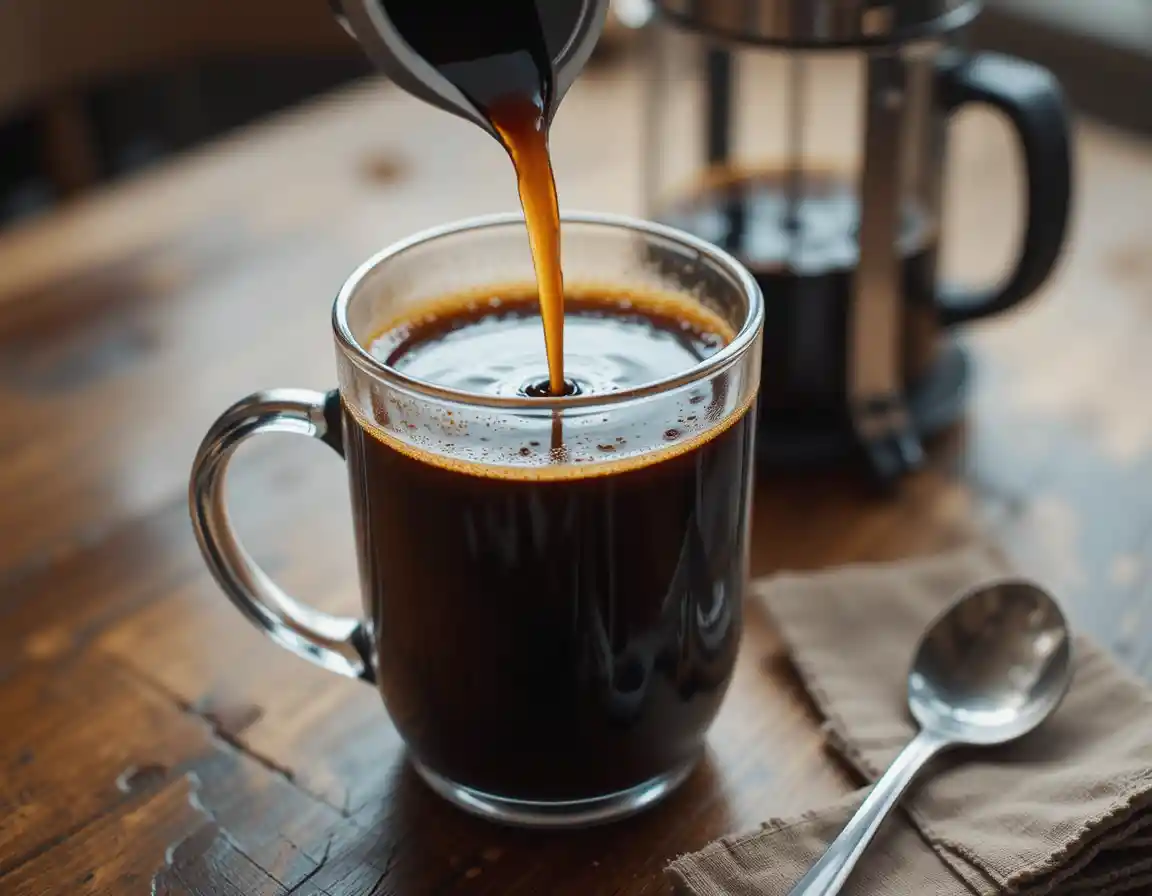Perfect French Press Coffee Ratio: 1 Easy Guide! ☕
Table of Contents
Table of Contents
Introduction: The Quest for the Perfect Cup
Have you ever stood in your kitchen, coffee grounds in hand, wondering if you’re about to brew a perfect cup or waste good beans? That moment of doubt before measuring your coffee for a French press can make or break your morning routine. The perfect French press coffee ratio isn’t just about following rules—it’s about creating a daily ritual that brings joy with every sip.
For many coffee enthusiasts, the French press represents the perfect balance between simplicity and flavor. Unlike complicated espresso machines or pour-over setups that require special training, the French press is accessible to everyone. Yet, despite its straightforward design, achieving that ideal cup requires understanding one crucial element: the perfect coffee-to-water ratio.
In this comprehensive guide, you’ll discover exactly how to measure, prepare, and brew French press coffee that suits your unique taste preferences. Whether you’re new to this brewing method or looking to refine your technique, you’ll find practical, easy-to-follow advice that transforms your daily coffee experience.
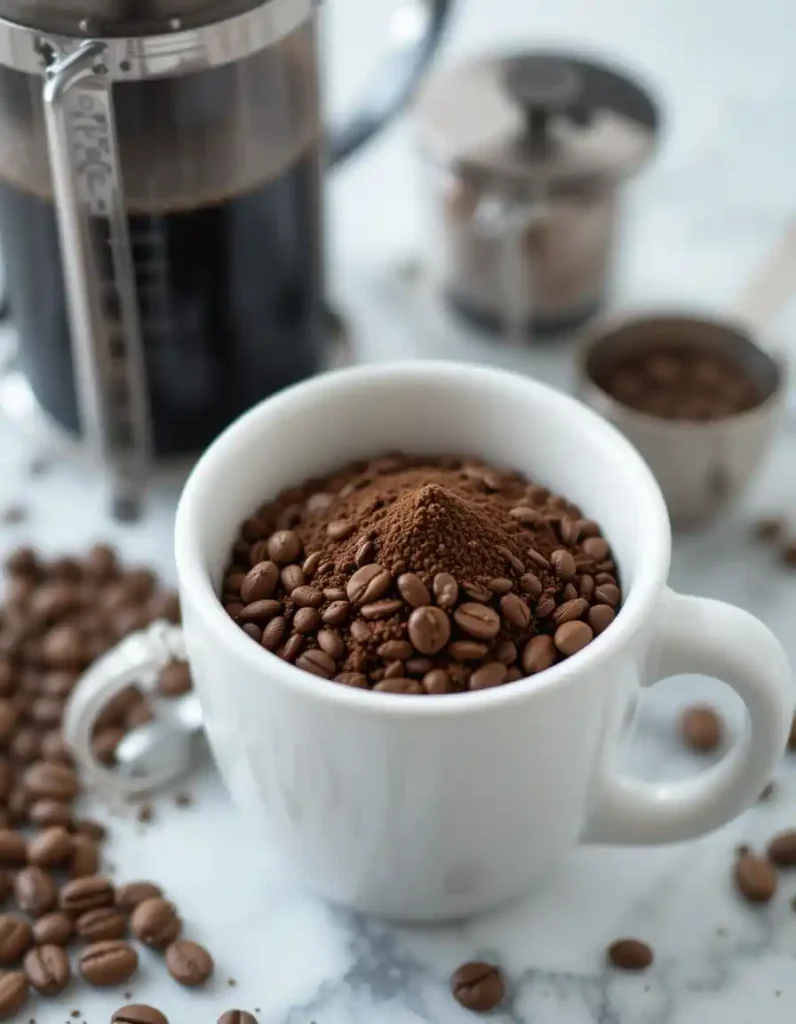
Understanding French Press Coffee Basics
What Makes the French Press Special?
The French press brewing method stands apart from other coffee preparation techniques because of its immersion brewing process. Unlike drip methods, where water passes through coffee grounds, the French press allows the coffee to steep directly in hot water before being separated by a metal mesh filter.
This unique approach preserves the natural oils and fine particles that paper filters typically remove, resulting in a rich, full-bodied cup with enhanced flavor complexity. You’ll notice a heavier mouthfeel and more pronounced coffee characteristics compared to other brewing methods.
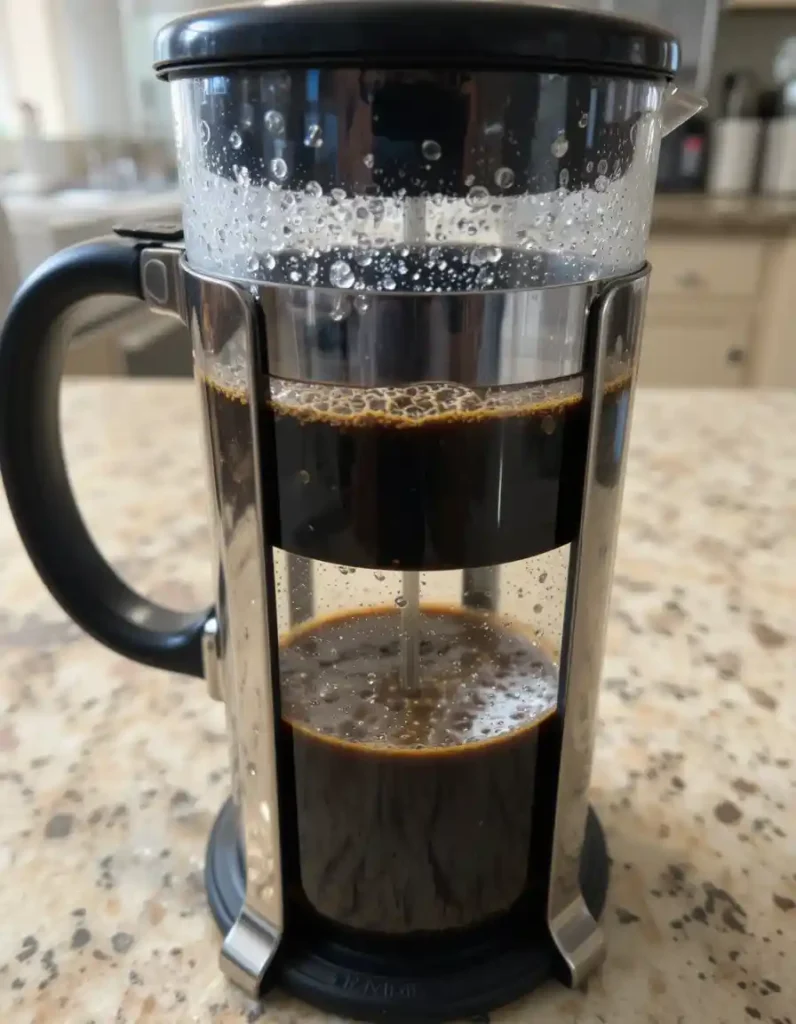
Essential Equipment
Before diving into ratios, ensure you have these key tools ready:
- Quality French press: Choose glass or stainless steel models for best results
- Fresh whole coffee beans: Preferably purchased within two weeks of roasting
- Burr grinder: For consistent, even particle size
- Digital kitchen scale: Precision matters when measuring coffee ratios
- Timer: To ensure proper extraction time
- Kettle: Preferably a gooseneck model for controlled pouring
Investing in these basic tools dramatically improves your brewing consistency and helps you replicate successful results every time.
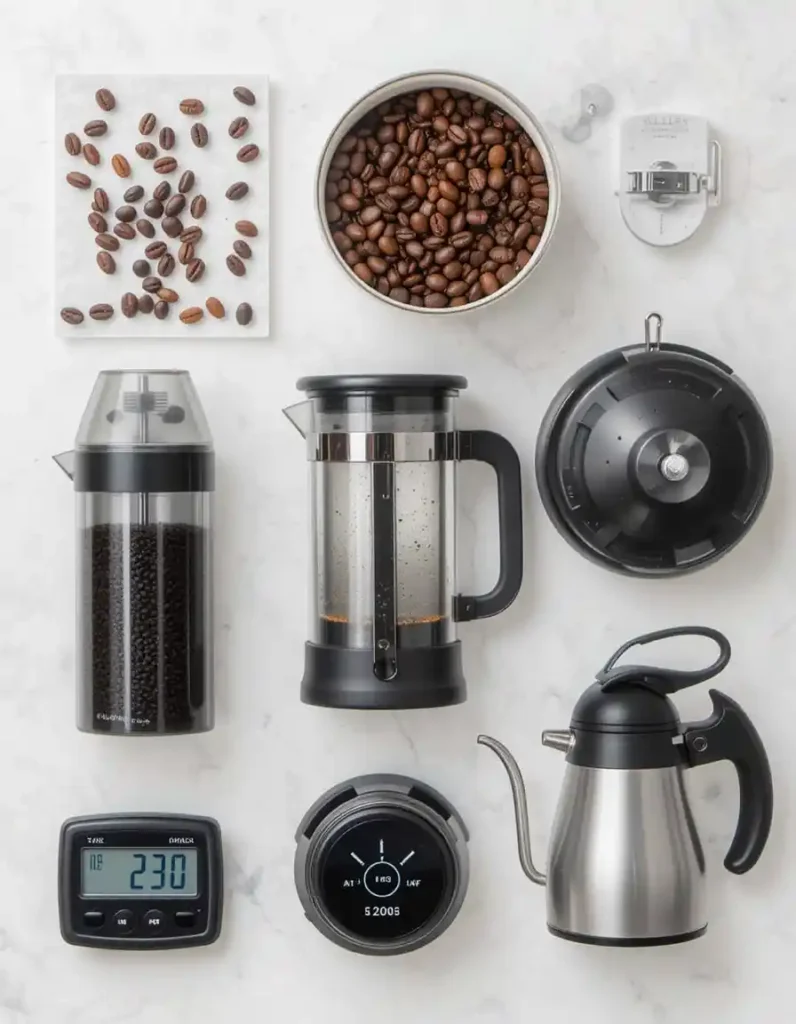
The Golden Ratio: Coffee to Water
The Standard 1:15 Ratio
Coffee experts typically recommend beginning with a 1:15 ratio—that means using 1 gram of coffee for every 15 grams of water. This proportion creates a balanced, medium-strength brew that works beautifully with most coffee varieties.
For practical application, this translates to approximately 67 grams of coffee for a liter of water. While measuring water by volume (milliliters) works fine, weighing coffee by mass (grams) provides much greater consistency between brews.
Ratio Customization Table
Your perfect ratio might differ based on personal preference. Use this handy reference table to adjust your brewing strength:
| Strength Preference | Coffee Ratio | For 500ml Water | For 1L Water |
|---|
| Light | 1:17 | 29g coffee | 59g coffee |
| Medium (Standard) | 1:15 | 33g coffee | 67g coffee |
| Strong | 1:12 | 42g coffee | 83g coffee |
| Extra Strong | 1:10 | 50g coffee | 100g coffee |
Finding Your Perfect Ratio
Remember that your ideal ratio may vary based on several factors:
- Bean variety and roast level: Darker roasts often require less coffee for the same strength
- Personal taste preference: Some enjoy stronger brews, others prefer lighter ones
- Brewing water temperature: Hotter water extracts more quickly
- Grind size adjustments: Coarser grinds may require more coffee
Don’t hesitate to experiment by adjusting one variable at a time until you discover your perfect balance.
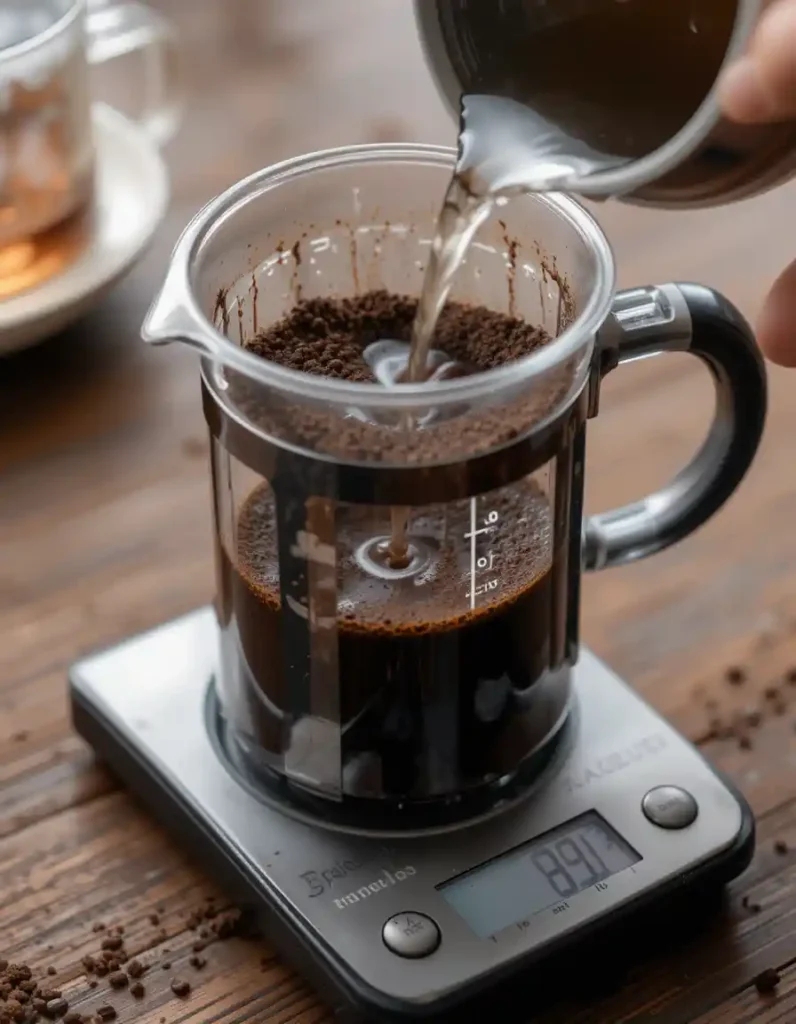
Step-by-Step Brewing Process
1. Preparation Phase
- Heat water to 195-205°F (90-96°C) – just off the boil
- Weigh your coffee beans according to your chosen ratio
- Grind to a coarse consistency resembling sea salt particles
- Pre-warm your French press by rinsing it with hot water
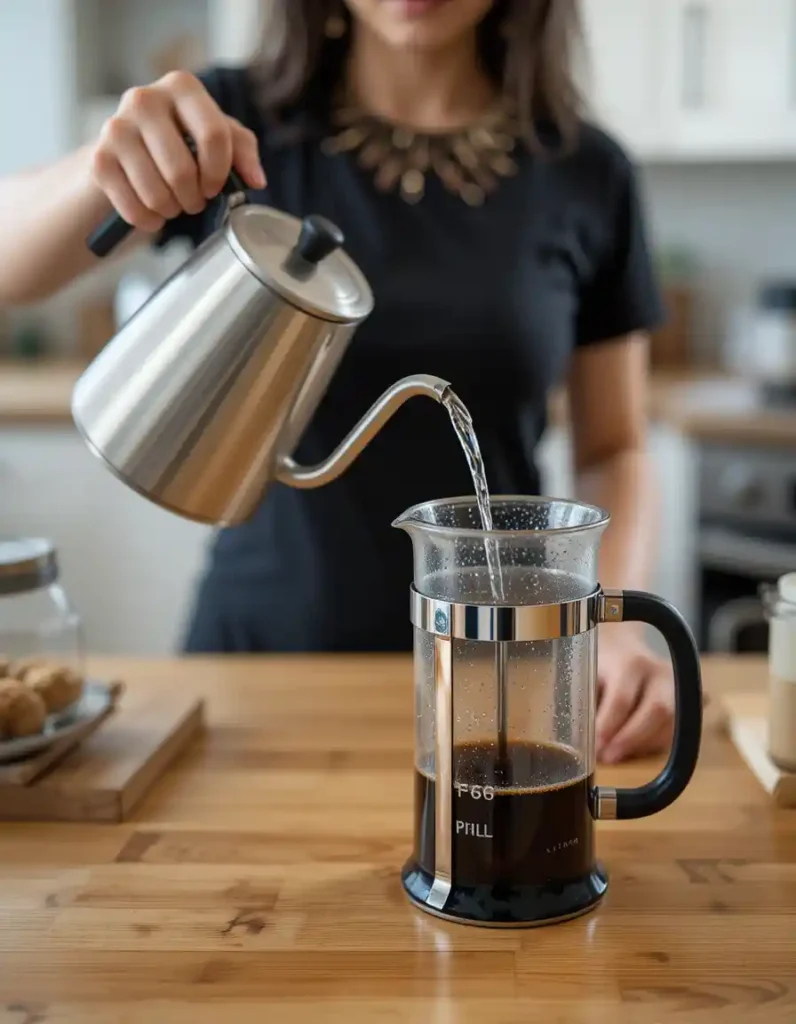
2. The Brewing Method
- Add your measured coffee grounds to the empty press
- Start your timer and pour in half the water
- Stir gently using a wooden spoon to ensure all grounds are saturated
- Add remaining water up to your desired level
- Place the lid on the French press with the plunger fully raised.
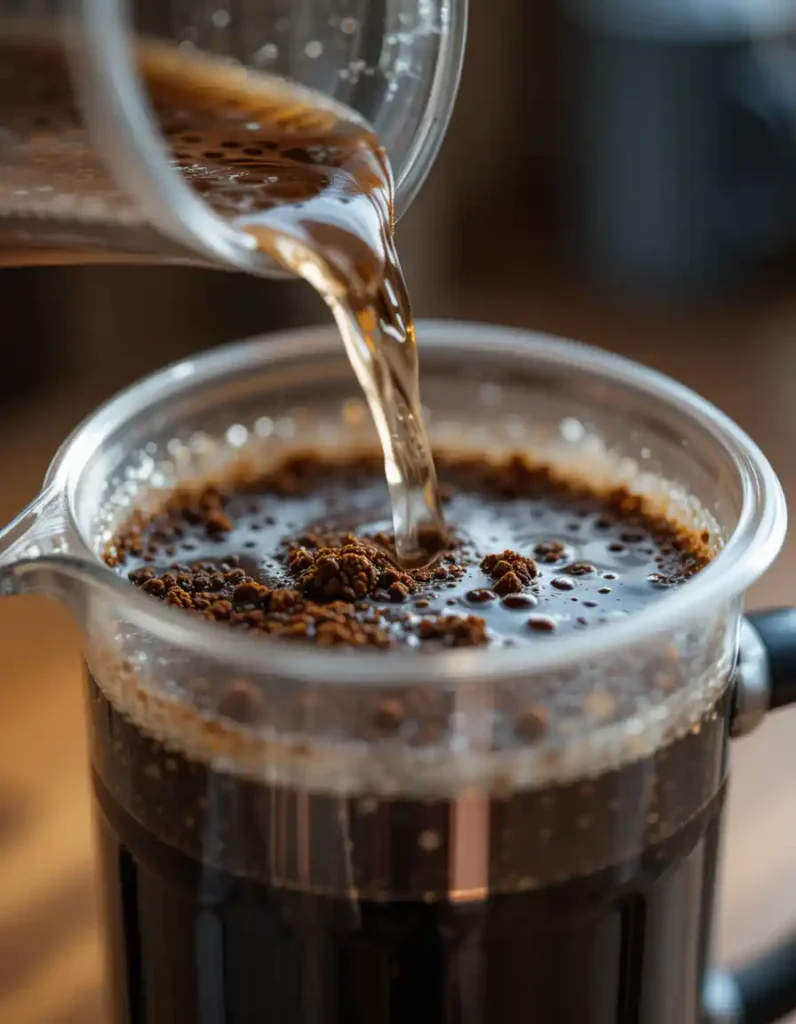
3. Timing Is Everything
Brew for exactly 4 minutes for standard strength. This extraction time balances flavor development while preventing over-extraction. If you prefer a lighter taste, try 3:30, or extend it to 4:30 for a stronger brew.
“The French press is forgiving, but time and ratio are non-negotiable elements of a great cup.” – James Hoffmann, World Barista Champion
After brewing, press the plunger down slowly and steadily—taking about 15-20 seconds to complete the press. Pour immediately to prevent continued extraction.
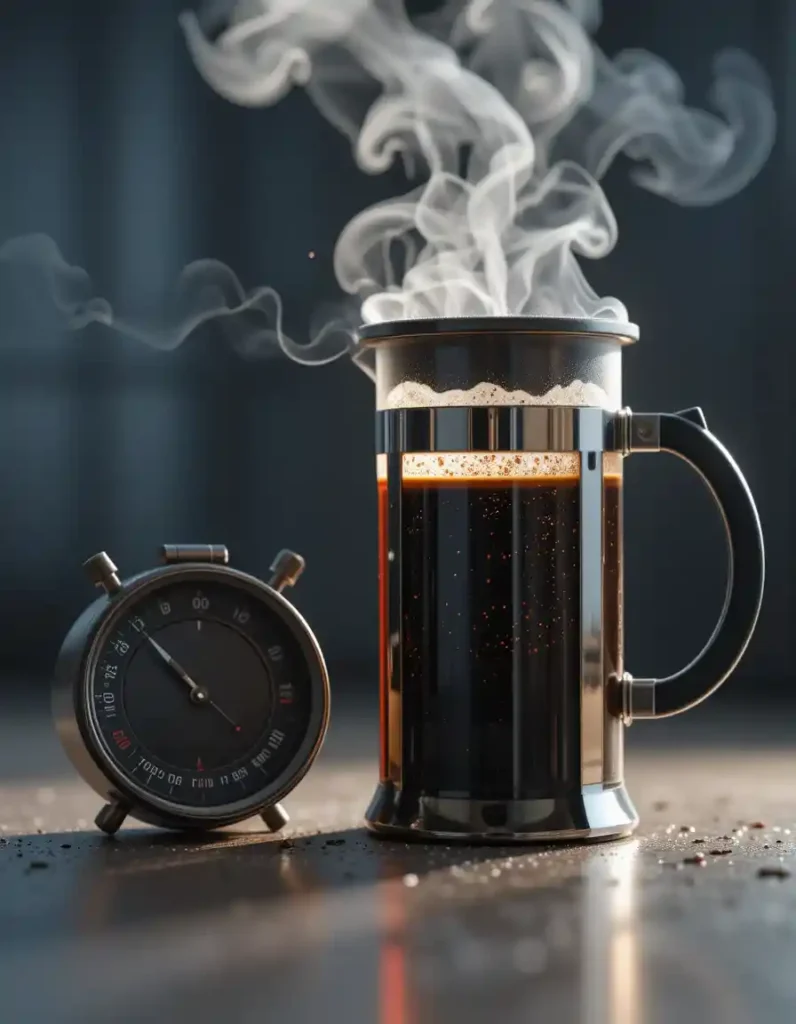
Troubleshooting Your Brew
Common Problems and Solutions
Too Bitter?
If your coffee tastes harsh or astringent, you’re likely over-extracting. Try these adjustments:
- Use a coarser grind setting
- Reduce brewing time by 30 seconds
- Lower water temperature slightly
- Consider a slightly lower coffee-to-water ratio
Too Weak?
For coffee that tastes thin or lacks character:
- Increase your coffee ratio (try moving from 1:15 to 1:12)
- Ensure water temperature reaches at least 195°F
- Verify that your grind isn’t too coarse
- Make sure all grounds are fully saturated during brewing
Too Silty?
Excessive sediment at the bottom of your cup suggests:
- Your grind may be too fine
- You might be plunging too forcefully
- Consider trying the “double plunge” method described below
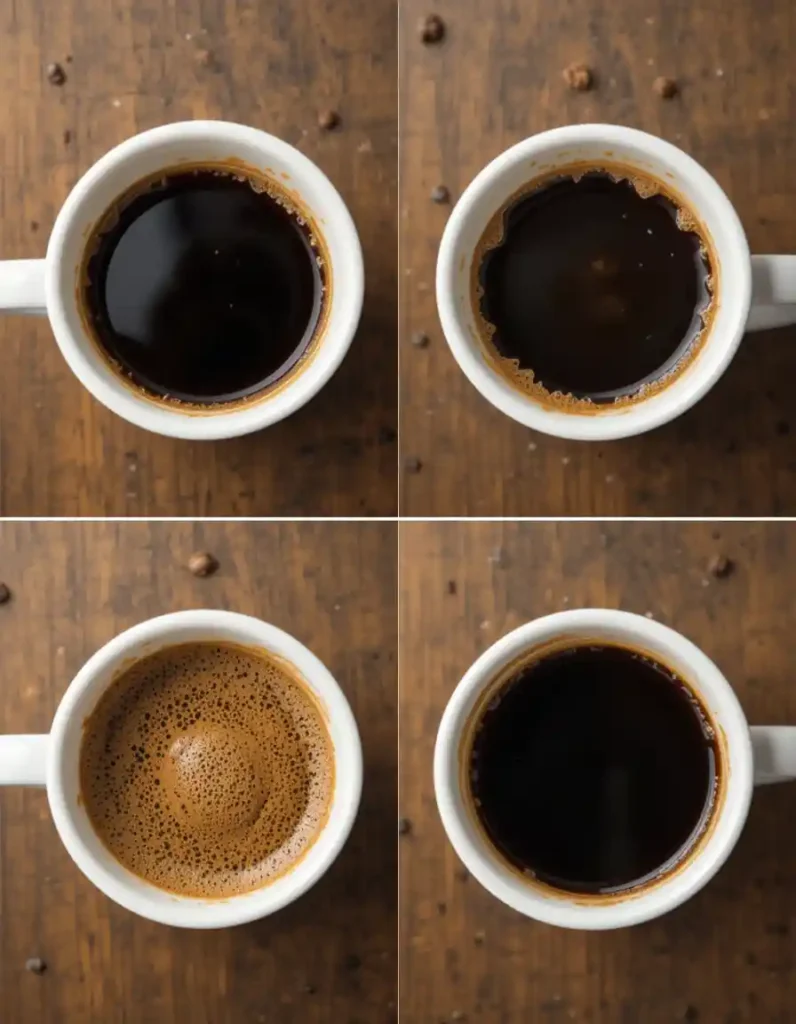
Coffee Bean Selection for French Press
Best Roast Levels
Medium to dark roasts typically perform exceptionally well in a French press. These roasts develop a body and sweetness that complement the brewing method’s full-extraction approach. Look for beans described as having chocolate, nutty, caramel, or spice notes for particularly satisfying results.
Origin Recommendations
While personal preference ultimately determines your favorite beans, these origins often shine in French press brewing:
- Colombian: Offers excellent balance with caramel sweetness and medium body
- Ethiopian: Provides vibrant fruit notes and wine-like acidity that stands up well to immersion brewing
- Sumatran: Delivers earthy, full-bodied character with low acidity and complex herbal notes
For best results, purchase whole beans and grind them just before brewing to preserve aromatic compounds that begin dissipating within minutes of grinding.
Advanced Techniques
The Double Plunge Method
For a cleaner cup with reduced sediment:
- Press the plunger halfway down after the standard 4-minute brew time
- Wait 30 seconds while suspended particles settle below the filter level
- Complete the plunge slowly and carefully
- Pour immediately into cups or a separate carafe
This technique significantly reduces the “muddy” character some find objectionable in French press coffee.
Cold Brew French Press
For refreshing iced coffee:
- Use a stronger 1:7 coffee-to-water ratio
- Combine room temperature water with coarse grounds
- Steep at room temperature for 12-24 hours
- Press and transfer to refrigerator
- Serve over ice, diluting to taste if desired
This method produces a smooth, low-acid concentrate that is perfect for summer refreshment.
Environmental Factors
Water Quality
Water quality accounts for 98% of your coffee’s composition, making it perhaps the most overlooked factor in home brewing. Use filtered water free from strong odors or tastes—if your water doesn’t taste good on its own, it won’t make good coffee.
Avoid distilled water, which lacks the minerals that help extract flavor compounds. The ideal water contains about 150 ppm of dissolved solids.
Altitude Effects
If you live at higher elevations, water boils at lower temperatures due to reduced atmospheric pressure. Above 3,000 feet, you might need to extend brewing time slightly to compensate for the cooler maximum water temperature.
Recipe: Perfect French Press Coffee
Ingredients:
- 33g freshly roasted coffee beans (for 500ml water)
- 500ml filtered water
- Pinch of salt (optional, reduces bitterness perception)
Equipment:
- French press (17 oz / 500ml capacity)
- Burr grinder
- Digital scale
- Timer
- Kettle
- Wooden stirring spoon
Instructions:
- Bring water to boil, then let it cool for 30 seconds to reach ideal temperature
- Grind coffee beans to a coarse consistency
- Add grounds to pre-warmed French press
- Start timer and add 100ml water, stirring gently to saturate all grounds
- After 30 seconds, add the remaining 400ml water
- Place lid with plunger raised and steep for 3:30-4:30 (4:00 recommended)
- Press plunger down slowly
- Pour immediately into warmed mugs
Tips for Success:
- Always use freshly roasted beans
- Grind immediately before brewing
- Maintain consistent water temperature
- Time your brew precisely
- Pour into a separate vessel if not serving immediately
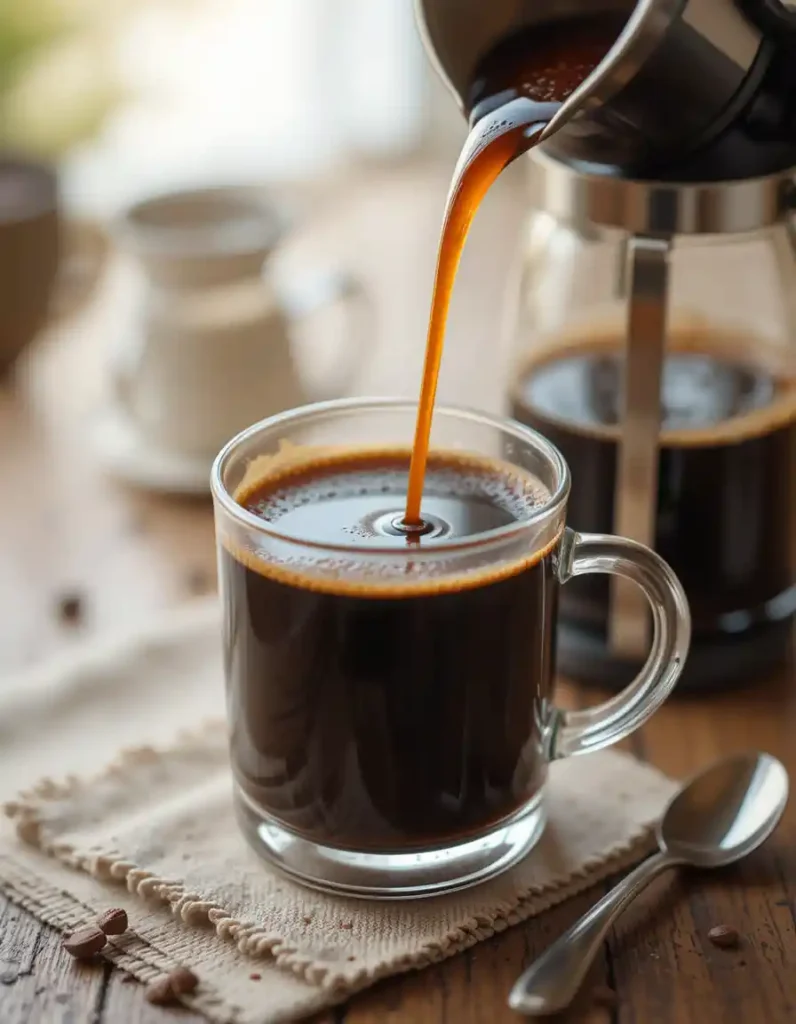
Conclusion
The perfect French press coffee ratio forms the foundation of a consistently excellent brewing experience. Starting with the standard 1:15 ratio gives you a reliable baseline, but don’t hesitate to adjust according to your personal preferences.
Remember that brewing great coffee involves both science and art. The measurements and techniques provide structure, but your palate determines the final destination. Keep notes on your brewing experiments to track what works best for your taste.
With this guide, you now possess everything needed to craft your ideal cup—bold, smooth, and perfectly tailored to your preferences. Enjoy the process of refining your technique, and savor the results of your brewing mastery each morning.
FAQ
What is the ideal coffee-to-water ratio for French press brewing?
The standard French press coffee ratio is 1:15, meaning 1 gram of coffee for every 15 grams of water. This produces a medium-strength brew, but you can adjust to 1:12 for stronger coffee or 1:17 for a lighter cup. Your personal preference matters most, so don’t hesitate to experiment.
How much coffee do I use for 2 cups of French press?
For 2 standard cups (about 250ml of water), use approximately 17 grams of coffee using the standard 1:15 ratio. If you prefer stronger coffee, increase to 21 grams. Remember that “cups” vary in size, so measuring your water volume specifically yields more consistent results.
Should French press coffee be fine or coarse?
French press coffee should be ground coarse, similar to sea salt or breadcrumbs. Fine grounds will pass through the mesh filter, creating a muddy cup with sediment and potentially causing bitter over-extraction. If your coffee is bitter, it could be because your grind is too fine.
How long should you brew French press coffee?
The perfect brewing time for French press coffee is 4 minutes. This allows for proper extraction without developing bitterness. You can adjust by 30 seconds in either direction based on taste preference. Always use a timer for consistency between brews.
Why does my French press coffee taste bitter?
Bitter French press coffee usually results from over-extraction caused by grinding too fine, brewing too long, or using water that’s too hot. Try a coarser grind, shorter brew time, or slightly cooler water. Also, ensure you pour the coffee immediately after pressing to prevent continued extraction.
Can I make French press coffee without a scale?
While a scale provides the most consistent results, you can use volume measurements like tablespoons. As a rough guide, use 2 tablespoons of coarse ground coffee per 6 ounces of water. However, beans vary in density, so this method is less precise than weighing.
Is French press coffee stronger than drip coffee?
French press coffee typically contains more dissolved solids and oils than drip coffee, giving it a fuller body and more robust flavor. The caffeine content is primarily influenced by your coffee-to-water ratio rather than the brewing method itself.
Your Perfect Cup Awaits
Are you prepared to take your morning coffee experience to the next level? Start using these ratio guidelines tomorrow and discover how precise measurements can enhance the flavor of your French press brew. Consistency is the key—once you find your ideal ratio, you’ll be able to enjoy delicious coffee every day.
We’d love to hear from you! Share your French press brewing experiences, favorite beans, or custom ratios in the comments below. Let’s talk coffee!
Please note: This article is for informational purposes only. Be sure to follow the manufacturer’s instructions for your specific French press model to ensure optimal brewing results.
For more coffee tips, recipes, and inspiration, follow us on social media and stay connected with our latest updates!
Git more recipes you might like
- Cake Toppers.
- Cookie Cereal Recipe.
- Artesano Bread.
- Aphrodisiac Chocolates.
- Best Swiss Coffee.
- Venetian Ice Cream Flavors.
Did You Try Our Recipe?
There are no reviews yet. Be the first one to write one.

